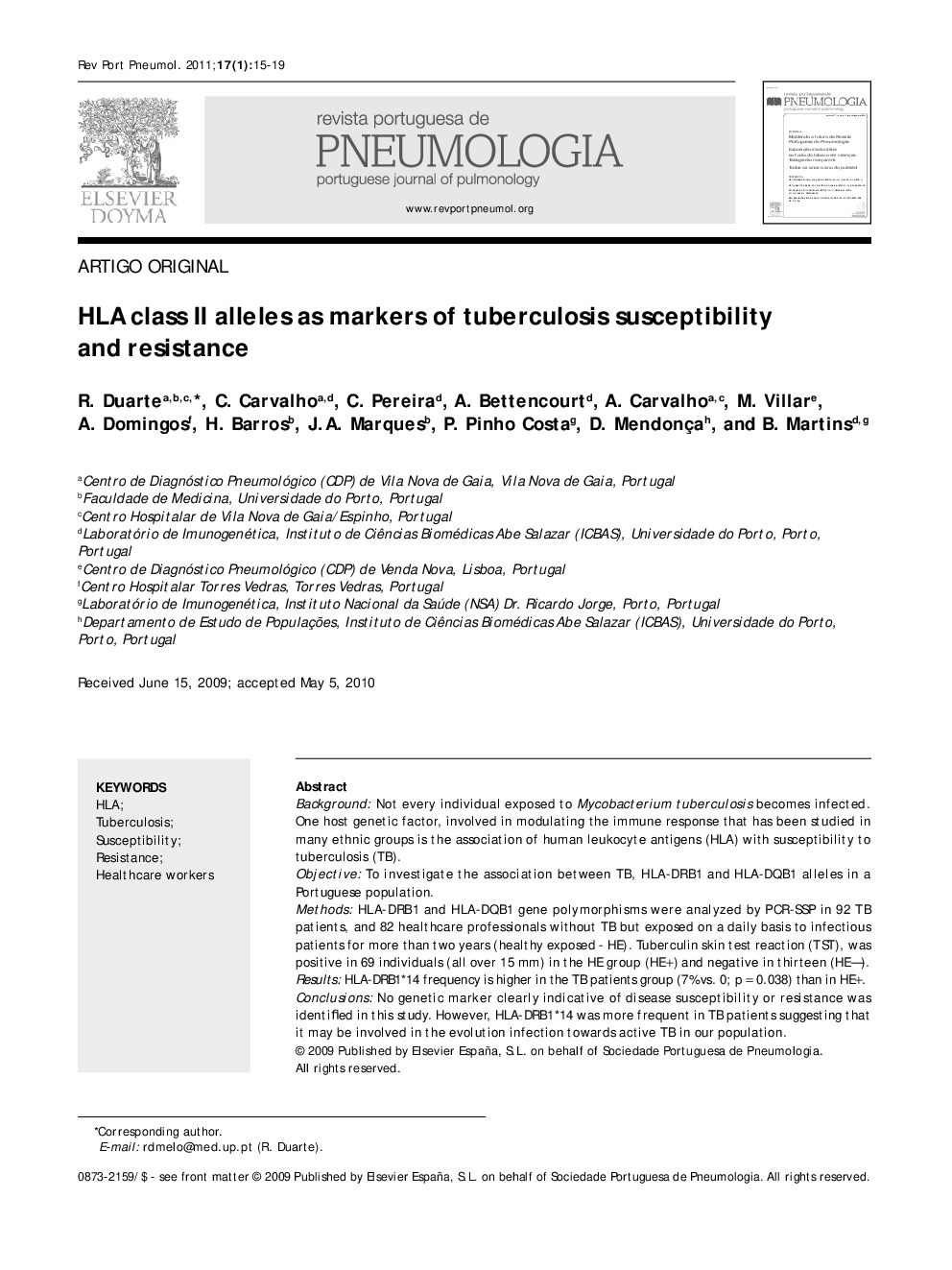| کد مقاله | کد نشریه | سال انتشار | مقاله انگلیسی | نسخه تمام متن |
|---|---|---|---|---|
| 4213917 | 1280949 | 2011 | 5 صفحه PDF | دانلود رایگان |

BackgroundNot every individual exposed to Mycobacterium tuberculosis becomes infected. One host genetic factor, involved in modulating the immune response that has been studied in many ethnic groups is the association of human leukocyte antigens (HLA) with susceptibility to tuberculosis (TB).ObjectiveTo investigate the association between TB, HLA-DRB1 and HLA-DQB1 alleles in a Portuguese population.MethodsHLA-DRB1 and HLA-DQB1 gene polymorphisms were analyzed by PCR-SSP in 92 TB patients, and 82 healthcare professionals without TB but exposed on a daily basis to infectious patients for more than two years (healthy exposed - HE). Tuberculin skin test reaction (TST), was positive in 69 individuals (all over 15 mm) in the HE group (HE+) and negative in thirteen (HE—).ResultsHLA-DRB1*14 frequency is higher in the TB patients group (7% vs. 0; p = 0.038) than in HE+.ConclusionsNo genetic marker clearly indicative of disease susceptibility or resistance was identified in this study. However, HLA-DRB1*14 was more frequent in TB patients suggesting that it may be involved in the evolution infection towards active TB in our population.
ResumoIntroduçãoNem todos os indivíduos expostos ao Mycobacterium tuberculosis ficam infectados. Um dos factores genéticos envolvidos na modulação da resposta imune e estudado em muitos grupos étnicos é a associação entre moléculas HLA (human leukocyte antigens) e a susceptibilidade à tuberculose (TB).ObjectivoInvestigar a relação entre TB e os alelos HLA-DRB1, DQB1 numa população Portuguesa.MétodosOs polimorfismos dos genes HLA-DRB1 e HLA-DQB1 foram analisados por PCR-SSP em 92 doentes com TB e 82 profissionais de saúde saudáveis, expostos diariamente a doentes baciliferos por um período superior a 2 anos (expostos saudáveis: ES). Neste grupo de ES, o teste tuberculínico foi positivo (TST ≥ 10 mm) em 69 indivíduos (todos com valor superior a 15 mm) (ES+) e negativo (TST < 10 mm) em 13 (ES—).ResultadosA frequência do alelo HLA-DRB1*14 é superior no grupo de doentes com tuberculose em relação ao grupo de ES+ (7% vs. 0; p = 0,038).ConclusõesNão foi identificado neste estudo, nenhum marcador genético de susceptibilidade/resistência à doença. No entanto, o alelo HLA-DRB1*14 foi mais frequente nos doentes com tuberculose, sugerindo que possa estar envolvido na evolução da infecção para tuberculose activa na nossa população.
Journal: Revista Portuguesa de Pneumologia - Volume 17, Issue 1, January–February 2011, Pages 15-19